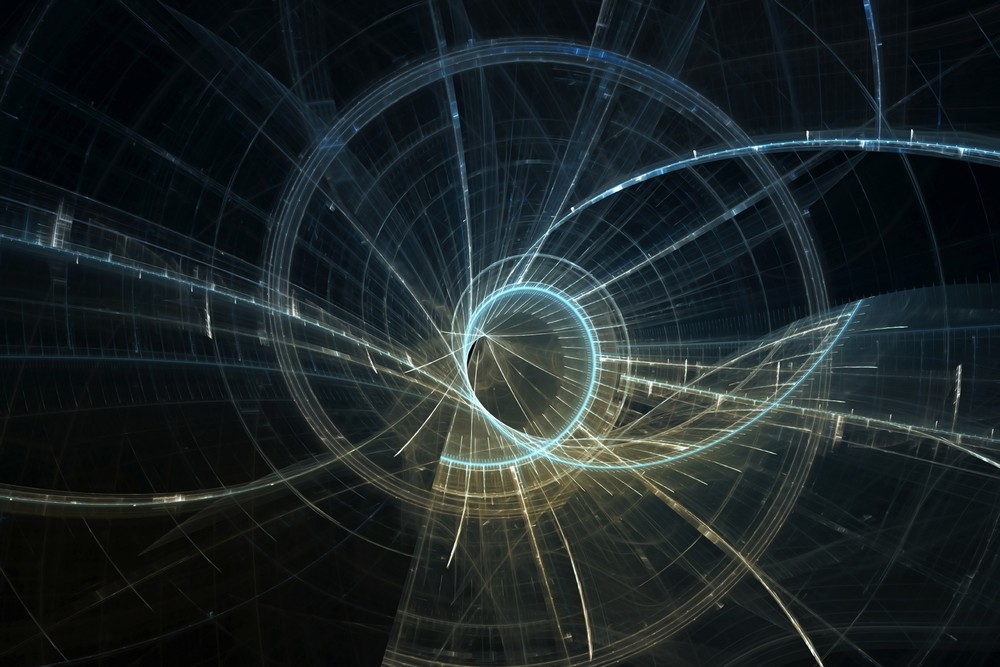Quantum computer: breaking any cipher, qubits and extremely low temperatures

Theoretically, quantum computers will be able to quickly solve problems that would take thousands of years for supercomputers. This technology can change the world we are used to. Popularly about quantum computers tells Eugene Glushko in the next release on the channel of our friends Sci-One TV. Text version - as always - read under the cut.
A regular computer will not need a quantum computer for a long time, maybe even never. But with its help, today you can put on your knees everything and everyone who depends on the Internet: for example, world banks and any modern financial systems. Well, or you can simply find out everything that other people are trying to hide from you.
')
In the 90s of the last century, the American mathematician Peter Shore came up with a quantum algorithm that can very quickly decompose a huge number into two simple factors. It would seem, who needs it at all? Unfortunately, conventional computers (like supercomputers) are coping with this task very badly. Those. they can decompose the number 15 into a 3 * 5 product, but not as many as 100 or 1000 characters. Technically, they can do it - they just go through all the combinations, but it will take more than one million years. And this weakness of classical computers is used by modern cryptographic algorithms. Today, almost all the valuable information that is transmitted via the Internet is encrypted with this calculation. These are banking transactions, secret negotiations, and even your correspondence in social networks. Deciphering all this with classic computers is almost impossible. Now imagine that someone suddenly created a quantum computer and launched Shor's algorithm on it. And then any information encrypted in the world will become available to it.

But this can be prevented. For example, using quantum cryptography, when information is encrypted into the quantum state of individual photons. So you will not do without a quantum computer. A quantum computer is impossible without qubits. Qbits - quantum bits - the same elementary blocks of a quantum processor as transistors in the processors of ordinary computers. It is necessary to distinguish between the theoretical concept of a qubit, as units of quantum information, and the physical embodiment of qubits, for which different physical systems can be used - photons , ions , spins of nuclei and electrons. Today most of all hopes are placed on superconducting qubits.
But how does the qubit work? We all know the bits - zeros and ones that are processed by ordinary computers. Quantum bits are very similar to them (although not without quantum oddities). They also have two basic states - 0 and 1, but, due to a special quantum property - superposition - they can be in any of the states between zero and one.

The superposition is clearly shown in the famous thought experiment with Schrödinger's cat: the cat in a closed box is both alive and dead at the same time, until we open the lid and look at it. Similarly with qubits - they can be in an arbitrary state between zero and one. But when we measure them, we always with a certain probability will get either 0 or 1.
By the way, qubits were one of Feynman's favorite themes! In the 1980s, he proposed using quantum state systems with two states (two-level systems) in nature to simulate problems that are difficult for classical computers. True, he did not know the word "qubit" - it was coined a little later by Stephen Wiesner. A qubit Vizner thought up to refer to quantum money .
How to create qubits? Many different solutions have already been proposed: quantum dots, trapped ions, defective diamonds, photons, and, of course, superconducting circuits that we and our colleagues deal with. And we managed to create the first superconducting qubit in Russia. The advantages of this type of qubits are obvious - these are large quantum objects that can be safely placed on a chip and not worry that they will fly away somewhere, like atoms or ions. They can be placed as you like and in any quantity, as well as precisely control their parameters. Such an artificial quantum system is the most likely candidate for building a quantum computer. And superconducting qubits are very similar to existing processors, so it will not be difficult to arrange their full-scale production.
A superconducting qubit is simply a ring of superconductors (a metal through which electrical current can flow without loss). But you can see several features. They are called Josephson junctions and are two pieces of superconductor separated by a thin layer of insulator. Pairs of electrons can easily penetrate through this layer due to quantum tunneling. Thanks to the Josephson junctions, we can control the energy levels in our qubits, adjusting them as necessary. For example, when the current in the ring flows clockwise, the qubit is in state 0, and when counterclockwise in state 1. But this is all in theory. How to practically create such structures? Here electron lithography comes to the rescue - drawing with a beam of electrons on a sensitive surface. In this way, you can create incredibly small structures up to 10 nanometers in size!
When the desired structure is painted, metal (for example, aluminum) is sprayed onto the surface of the chip. And the superconducting qubit is ready! Then it needs to be measured. To do this, we place the chip in a large cryostat . This is the same refrigerator, only very expensive and working on a mixture of liquid helium. It allows you to get extremely low temperatures - up to one hundredth of a degree above absolute zero! It is a hundred times colder than in the coldest place in the universe ! Why do we need such low temperatures? First, the superconductors from which our chip is made began to superconduct - so that the electrons come together in pairs and begin to move in concert and without energy loss. Secondly, in order to isolate our fragile quantum system as much as possible from the outside world. In the first place - from thermal noise - the worst enemy of any "quantum".
Actually, this is one of the problems that has so far failed to create a real full-fledged quantum computer. You have probably heard that IBM announced the era of quantum computers and even gave everyone access to one such over the Internet. But this is still more advertising, although based on serious scientific work. The truth is that IBM engineers assembled a processor of only 5 qubits on which nothing serious can be started (for this they need several hundred). The fragility of qubits prevents us from entering a new era. And when they are joined together, the lifetime of the qubits rapidly decreases.

This happens because qubits are fragile quantum systems, which it is desirable to isolate as much as possible from the outside world (then they can maintain their quantum state). And when we plant qubits next to them, they inevitably begin to interact with each other, and the quantum state of each of them is destroyed. And the more they will be near - the faster it will collapse.
Fans of computer games will surely ask: and so much strength for the sake of a computer, on which even DotA or Minecraft can not be launched? I already spoke about encryption. But it is important and more. Having created a quantum computer, we will be able to win in the solution speed of just a few, but very important for the modern civilization types of tasks:
- quick search in giant databases (and they are becoming more and more);
- freight optimization ( traveling salesman problem );
- accelerating and cheapening the search for new drugs and materials, for example, high-temperature superconductors.
But there is still a lot of work ahead. May science be with you!
Useful links:
makeitquantum.ru - for further reading on the topic.
vk.com/makeitquantum - the latest quantum news.
mipt.ru/science/labs/artificial_quantum_systems_lab - laboratory of artificial quantum systems.
Source: https://habr.com/ru/post/395677/
All Articles